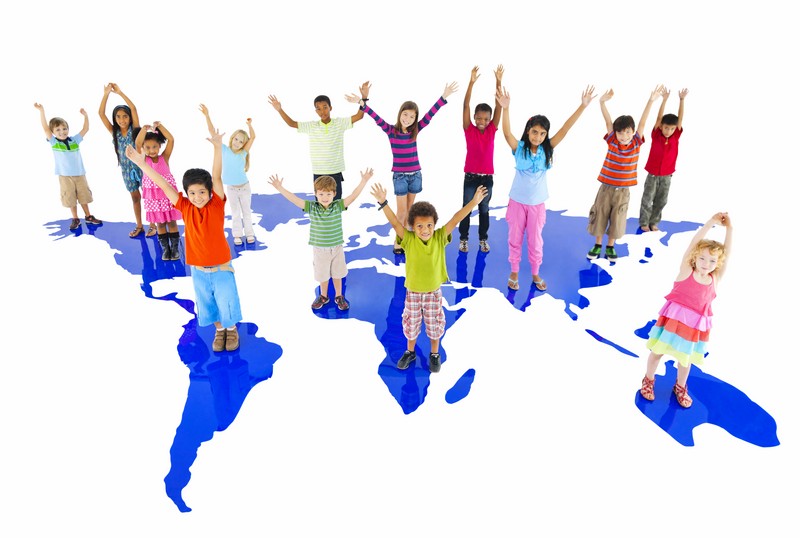Be more than an international school, be an internationally-minded school
What is the meaning of an “international education”? While it may simply be understood as learning alongside a number of other nationalities, it is something much deeper. It is having a deep understanding of oneself and of the similarities and differences between us and others around the world. For learners, it is not just acquiring knowledge about the world; it is learning to understand how the world relates to them. It is teaching children to recognize their place and responsibilities within the global community.
As a teacher at an international school, it is not our celebration of diversity that sets our curriculum apart, instead, it is the international-mindedness that we seek to foster in our pupils.
For children at international schools, the inclusion of international-mindedness in the curriculum means lots of opportunities to capture meaning from experiences within their ‘host’ country (the country they live in now) and their ‘home’ country (their nationality or country of birth). Finding similarities and differences between the two is often an easy way for children to understand.
Why is international-mindedness so important for children today? An increasing number of people are living and working abroad. Developments in technology and globalization have effectively made the world smaller. As a result, the likelihood of the current generation of school children living and working in their home country their entire lives is rapidly decreasing. In the same thread, not only are more people traveling around the world to live and work, the world is traveling to us. Even someone who never leaves their hometown will be faced with interacting with people from other cultures on some platform. As such, being able to respect, relate to and co-exist with people from other cultures are now essential skills that weren’t prevalent in the past.
As an intrepid teacher who has lived and worked in four countries across three continents, I have worked alongside a myriad of people, each with their own, unique cultural backgrounds. Looking back at those experiences, making connections with these people was a key factor that enabled me to be successful. International-mindedness promotes just that, a mindset of cooperation and understanding others on a global scale.
What does international-mindedness look like in an international primary school classroom? At our school we teach the International Primary Curriculum (IPC). As you would expect, the IPC promotes opportunities for globally-mindful learning within every unit of work. Children are given opportunities to link their personal experiences between home countries, previous host countries and their current country, Vietnam. For instance, when my Year 5/6 students were learning about a topic on rivers entitled “Go With the Flow,” the children proudly shared personal experiences, photographs and videos of geographical river patterns. Some of these were sourced from parents, others from family members living in other parts around the world. This actively engaged the whole family in the learning at school. Furthermore, the entire class had unique and personal materials to draw from, and each child felt empowered by the relevance of their contributions.
In another example, during a topic about inventions called “What Price Progress?” the children considered the positive and negative impact of developments in technology on Vietnam, as well as the wider world. In this instance, the focus on international-mindedness fostered critical thinking that allowed the children to consider their responsibility in making good choices and to consider the potential impact of their decisions on the rest of the world. We want our learners to feel a sense of common humanity and shared guardianship of the world, to recognize that they are interdependently responsible for the environment, for global issues, and for the protection of the world.
Essentially, international-mindedness encourages children to move along a path that takes them away from the idea of only thinking about ‘self’ and towards the idea of relating to the ‘other.’ This theory, originally expressed by Developmental Psychologist, Dr. Howard Gardner, argues that this idea of ‘other’ is not something to be either feared or revered, but to be recognized as part of the interconnectivity of our new world.
How you can support and encourage international mindedness at home?
- Create experiences to help your child learn about and value other cultures through films, food, music and visits to museums or cultural events
Ho Chi Minh City is a vibrant melting pot of cultures and there are so many organized events that you can enjoy as a family.
- Talk about current world events in a child-friendly language and use these as opportunities to discuss other countries and cultures.
- When choosing books to read with your child, choose those that feature storylines set in another culture. And while reading, ask questions and talk with your child about similarities and differences between the culture featured in the book and their own, as well as those of other countries you may have visited or lived in.
By using some of these simple tips, you will not only strengthen your child’s own cultural identity, but foster their curiosity about the world.
BIO: Natasha Fletcher joined Saigon Star International School as a Year 1 and Year 5/6 class teacher in September 2015.




